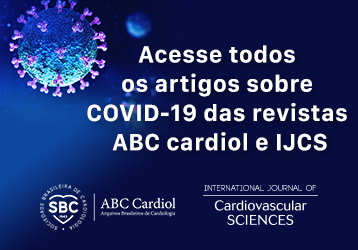Volume 33, Nº 4, Julho e Agosto 2020
DOI: https://doi.org/10.36660/ijcs.20180064
ARTIGO ORIGINAL
Influence of Family History of Diabetes on Cardiac Autonomic Dysfunction of Adolescents
Carlos Alberto Alves Dias-Filho
Nivaldo de Jesus Soares Jr.
Carlos José Dias
Andressa Coelho Ferreira
Carlan da Silva Sena
Janaína de Oliveira Brito-Monzani
Rafael Martins Andrade
Adeilson Serra Mendes Vieira
Leandro Moraes Pinto
Wellington Roberto G. de Carvalho
Cristiano Teixeira Mostarda
Dr. Carlos Alberto Alves Dias-Filho

Abstract
Background: To evaluate cardiac autonomic modulation of adolescents with a family history of diabetic parents.
Objective: This study aims to evaluate the influence of a family history of diabetes on cardiac autonomic modulation.
Methods: This is an analytical and cross-sectional study on adolescents between 11 and 18 years of age, of both genders, who were divided into group with a family history of diabetes and a control group without a family history of diabetes. The study protocol consisted of the analysis of heart rate variability, blood pressure, anthropometric measurements, and body composition. Also, by using questionnaires, level of physical activity, sexual maturation, and sleep quality were evaluated. Normality of data distribution was tested using the Kolmogorov-Smirnov test. Then, statistical significance was evaluated using the Student's t-test, and the Cohen’s teste was used for calculation of the effect size. The level of significance adopted in the statistical analysis was 5%.
Results: When the group of individuals with a family history of diabetes was compared with the control group, statistically significant differences were observed in the variables the standard deviation of the NN time series interval (SDNN) (43.9 ± 2.2 vs. 53.5 ± 2.6 ms), the square root of the quadratic differences (RMSSD) (41.9 ± 3.3 vs. 52.4 ± 3.2 ms), standard deviation of beat-to-beat instantaneous variability (SD1) (29.7 ± 2.3 vs. 37.1 ± 2.3 ms), longterm standard deviation of continuous RR intervals (SD2) (. 54.1 ± 2.6 vs. 66.66 ± 3.5 ms), and in low frequency (LF) (496.0 ± 49.5 vs. 728 ± 71.6 ms2) and high frequency (HF) (1050.0 ± 120.4 vs. 737.4 ± 98.5 ms2) in the frequency domain.
Conclusions: Global autonomic modulation is decreased in adolescents with a family history of diabetes. We also observed a decrease in vagal activity in this group. So, sympathetic autonomic modulation is predominant in this population. (Int J Cardiovasc Sci. 2020; 33(4):360-367)
Keywords: Diabetes/heredity; Diabetes/Epidemiology; Adolescent; Body Weight; Body Mass Index, cardiac Autonomic System.











